Has your backyard been brimming with nectar-rich flowers and eager backyard Hummingbirds? Well, it is evident then that you must have encountered Hummingbirds previously in your lifetime.
There are 300+ different types of hummingbirds in the world.
However, Hummingbirds are the center of attention in the United States, North America, Canada, Mexico, and the Caribbean region.
Still, there is no place where you can witness all these flying jewels together.
There are approximately 15 types of Hummingbirds residing in the North American area.
If you are from Ecuador, Brazil, Costa Risa, or Columbia, there are chances that you must have eyed the Hummingbirds who like lush vegetation.
In short, Hummingbirds enjoy living in tropical regions. The thing is that their resemblance to species is uncanny.
You may be aware of Ruby-throated and Rufous Hummingbirds. Yet, what about others? Stay tuned to learn more!
Different Types of Hummingbirds
We have got you today with the list of different types of Hummingbirds.
We have collected data from disparate regions to keep you updated with the sorts of Hummingbirds.
So, what are you waiting for? Scroll down!
1. Broad-Tailed Hummingbird
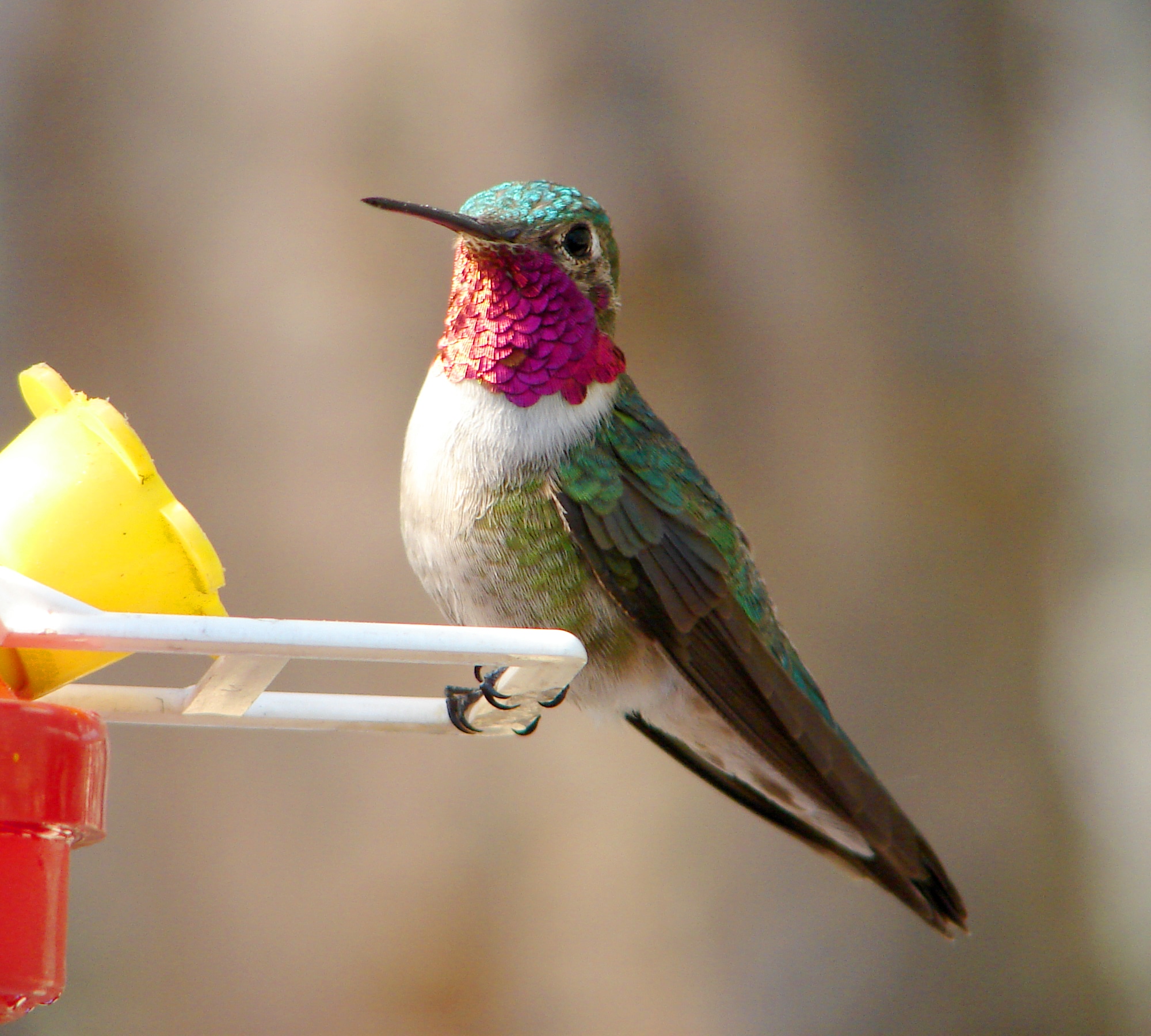
Broad-tailed hummingbirds are the most seen in the North American area. Their scientific name is Selasphorus Platycercus.
You can catch them from the southwestern mountains of the US to the north to southern Idaho.
The characteristic to discern broad-tailed hummingbirds is they have a rufous patch at the tail.
The female hummingbirds also show a bit of a reddish-brown streak over their throats. They regularly fly towards nectar feeders.
Broad-tailed Hummingbirds prefer meadows. So you know where to find them!
2. Allen’s Hummingbird
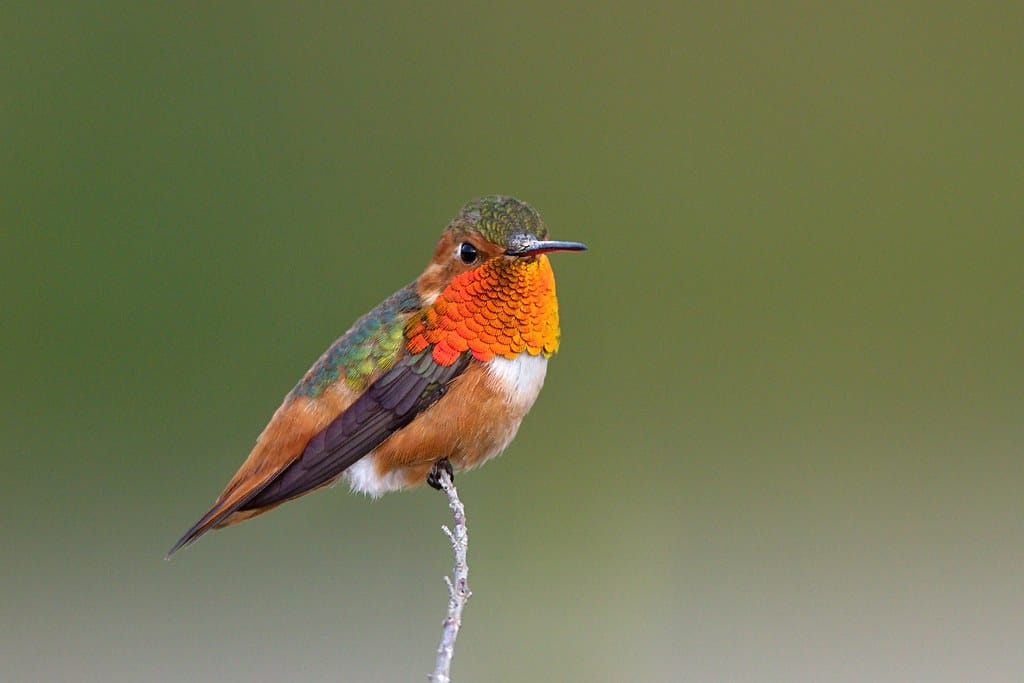
Allen’s Hummingbirds are the talk of the California town. At this rate, we can declare them as the National birds.
Among the seven species in the genus Selasphorus, Allen’s Hummingbird is the one. Allen’s Hummingbirds are easily recognizable due to their shape and size.
They are small and compact. Allen’s hummingbird has a bill that is as big as its head.
These hummingbirds can be distinguished from afar. They show an orange, coppery, and green appearance overall.
Another noticeable thing about this species is the bronze spots on their throats. They breed in the scrub, coastal forest, and chaparral.
3. Ruby-throated Hummingbird
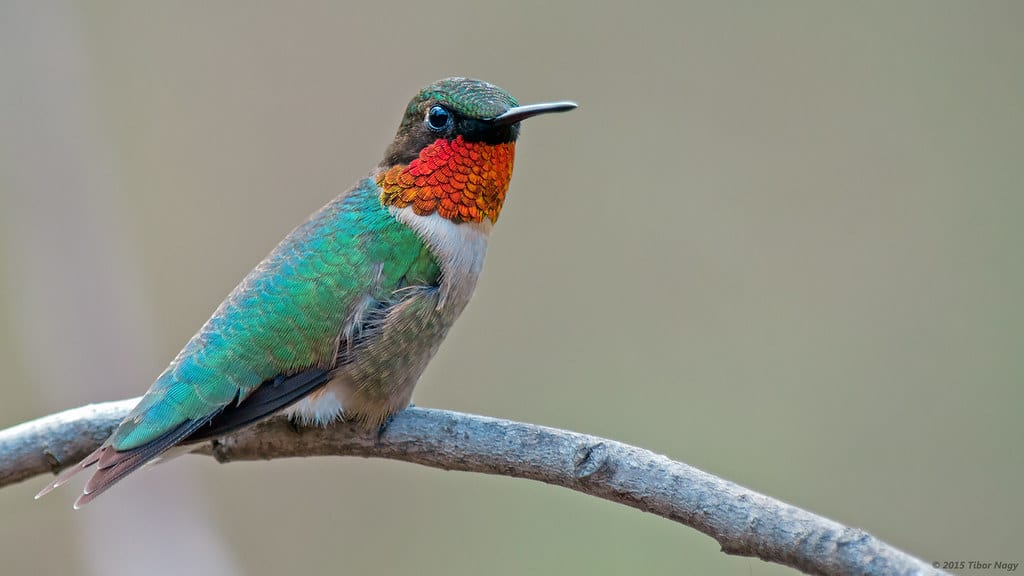
The ruby-throated is the most commonly seen in the list of different types of Hummingbirds.
Their scientific name is Archilochus colubris. They fly from the eastern US region to central Canada.
They are mostly sighted in the area from the Mississippi River in North America.
They show an emerald-green color on the crown and back area of the body. In the below part, there can be seen white underpants.
The male species have a reddish throat. These tiny birds have shown numerous flying speeds. They are said to be flapping 50 wings per second.
4. Black-Chinned Hummingbird
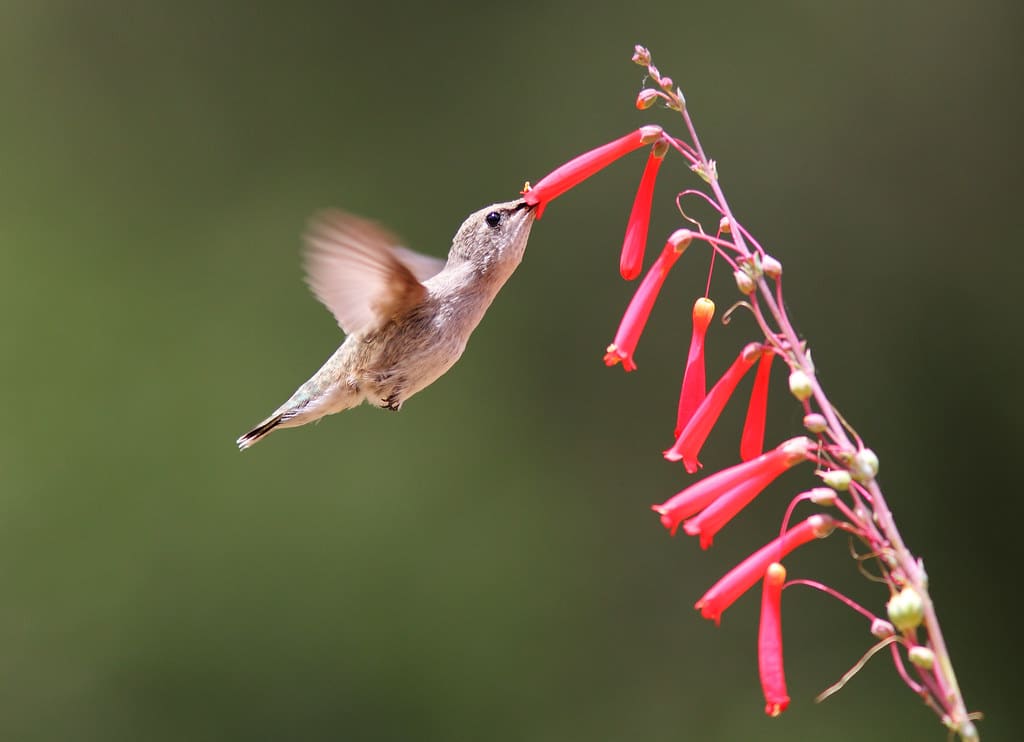
Black-chinned hummingbirds are small creatures Flying from the United States to Mexico.
The first thing that can help you identify these different types of Hummingbirds is that they display no vibrant hues.
They have black chins, as the name suggests. However, a purple strap around the neck of these birds can be seen.
They are most often observed in all areas covering deserts to mountain forests.
The fun fact about the Blach-Christened hummingbirds is that they wag their tails. These little birdies can have a lifespan of approximately 10 years.
5. Costa’s Hummingbird
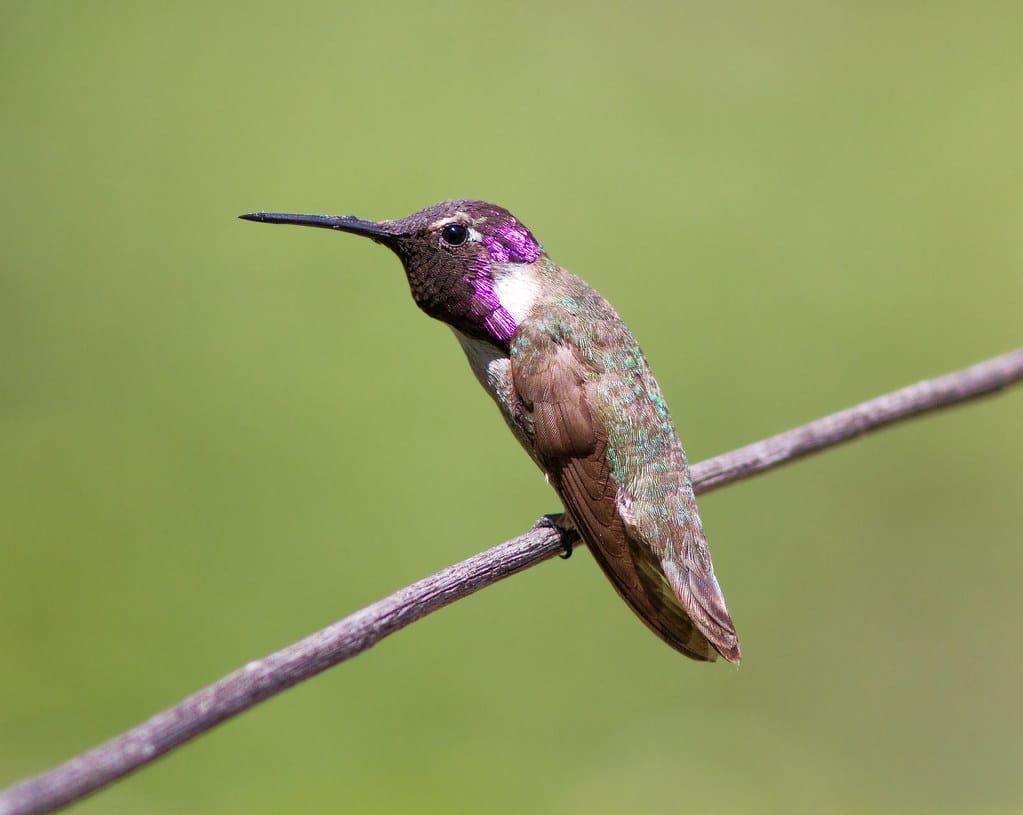
Costa’s Hummingbirds are abundantly in the US and northwest Mexico. They exhibit hunched posture and are tiny in size.
The male species have a purple-colored head. Costa’s male Hummingbirds are mostly known as purple Hummingbirds. Also, the female Hummingbirds have green tints.
The female birds also have whitish bellies. Hence, you can say even if you see Costa’s Hummingbirds, you need to learn which one is the male and the female.
6. Calliope Hummingbird
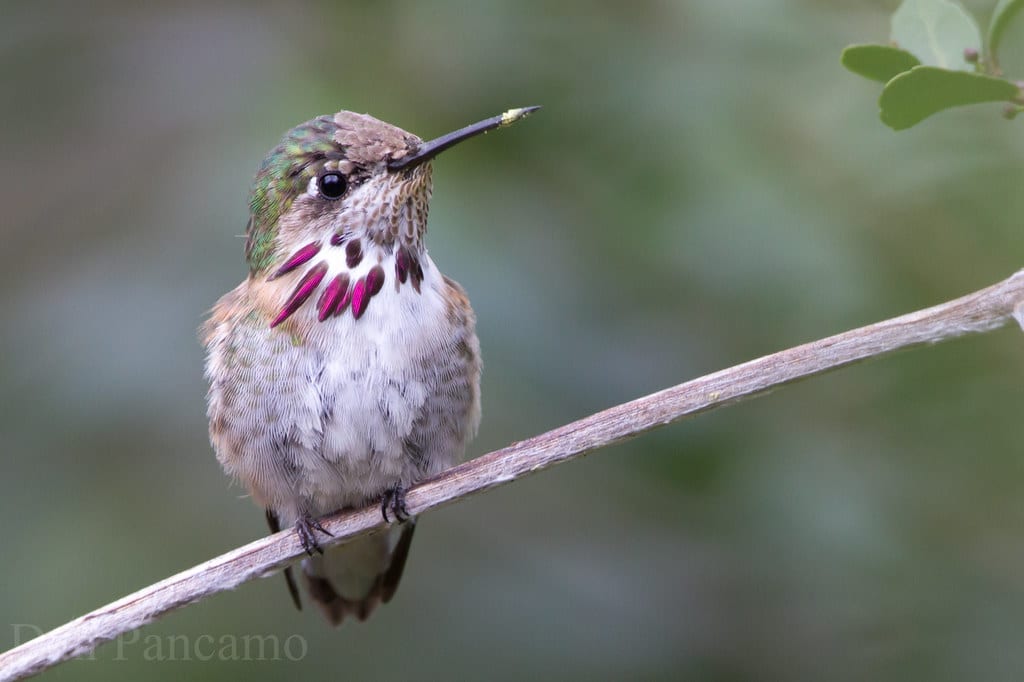
Calliope Hummingbirds have artistic shades all over their bodies. They are the smallest native bird in the United States.
Don’t go on its body, as Calliopes are one of the quickest-flying birds. They cover long distances in a shorter period.
Their western breeding ranges from California to Mexico to Central America. The scientific name for these Calliope Hummingbirds is Stellula calliope.
Male Calliopes show greenish print over their bellies while the females have pink and purplish gorget.
7. Lucifer Hummingbird
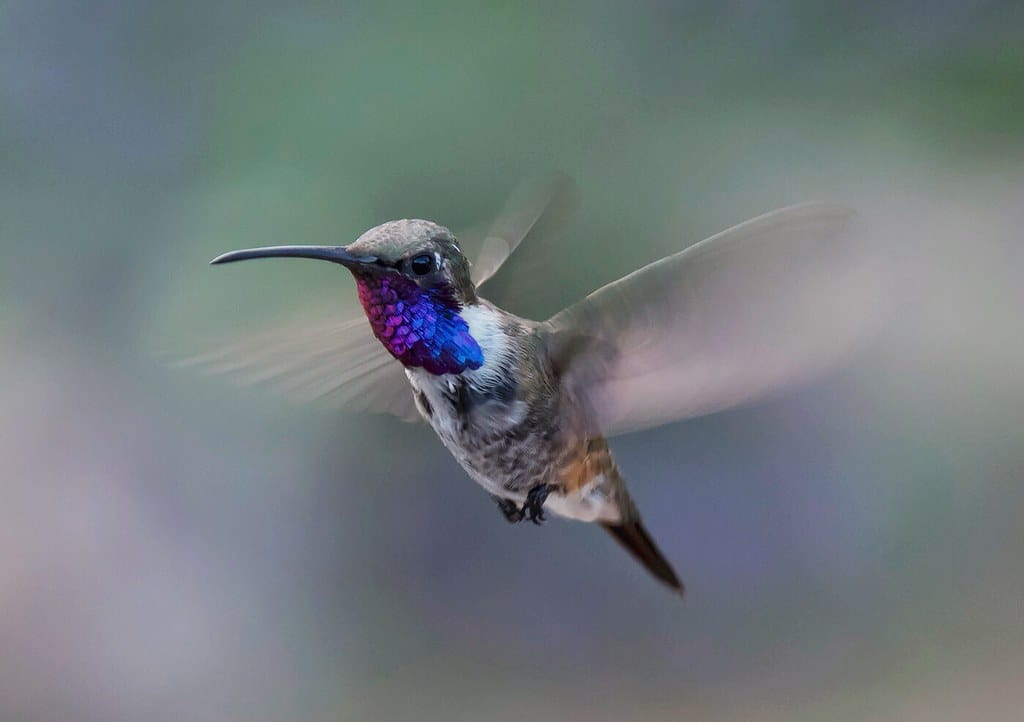
Lucifer Hummingbird is the grace of Northern and Central Mexico.
Like most of the different types of hummingbirds, they are also tiny and Purple-throated. They hardly fly in summer. They often breed in west Texas.
Male Lucifer Hummingbirds have green bellies and sides. On the other side, female hummingbirds have greenish bodies.
They also comprise blurry gray heads. Hence, that’s how both creatures differ.
8. Rufous Hummingbird

Have you ever played Angry Birds? Then, Rufous Hummingbirds are similar ones.
They are the most aggressive and force breed in the list of different types of hummingbirds. The rufous Hummingbird’s scientific name is Selasphorus Rufus.
These furious birdies are unmistakable because of their apparent appearance. The male has an orange-red throat and a light orange whole body.
On the other side, the female Rufous has a white abdomen and chest.
9. Violet-Crowned Hummingbird

Are you fed up with learning the different types of Hummingbirds? Is the work to know how the female and male species differ too much?
Then, you would be happy to know that Violet-crowned Hummingbirds are indistinguishable.
Both male and female species of Violet-crowned Hummingbirds are the same.
They primarily live in North America. The best thing is that you can smoothly tell them apart from other Hummingbirds.
Their black-tipped red bill and bright whitish body make them visible miles away.
10. Anna’s Hummingbird

Do you love Hummingbirds? Then, Anna can be your favorite bird as its music can be heard from a distance.
You don’t need to tally their appearance, their music is enough. Their sequence of pleasant-sounding whistles can last up to 10 seconds.
Anna’s Hummingbirds are popular for their matting practices. They survive on leafhoppers, midges, tiny bugs, and whiteflies.
11. Rivoli’s Hummingbird
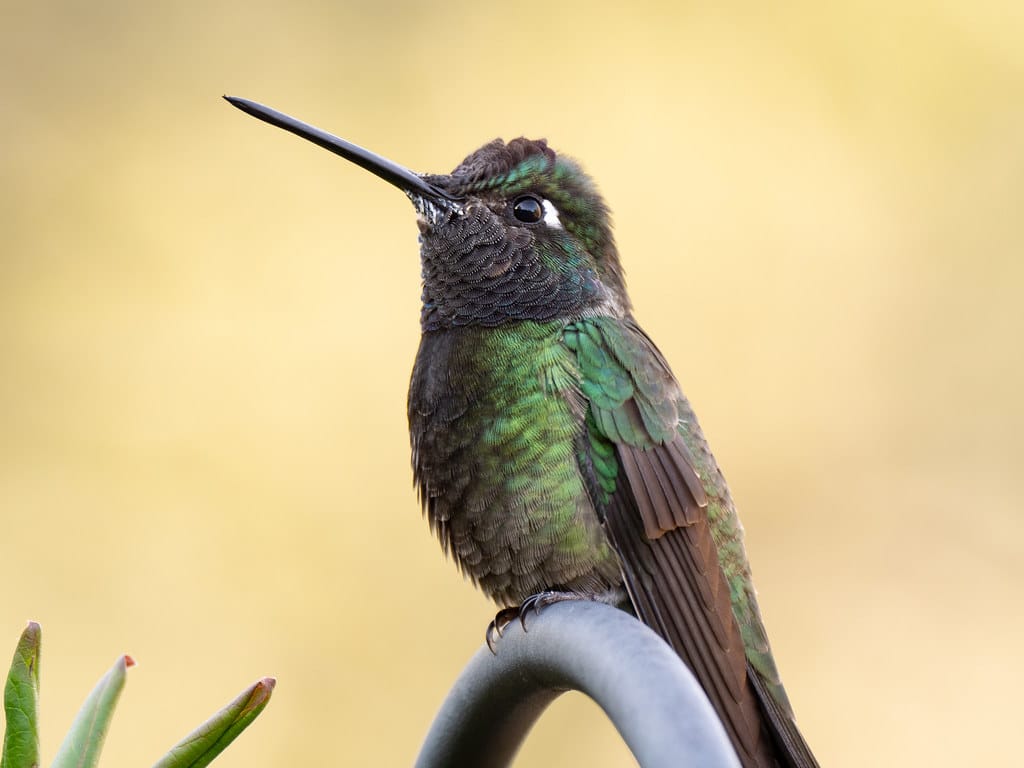
Rivoli’s Hummingbirds, also known as magnificent Hummingbirds, have the highest flying range.
Within the American Southwest, they can reach the northernmost extent.
Rivoli’s both sexes have similar colors as the peacock. They are both long, robust, and black-billed.
Their purplish and greenish head over their dark body makes these birdies mesmerizing.
12. Blue-Throated Hummingbird
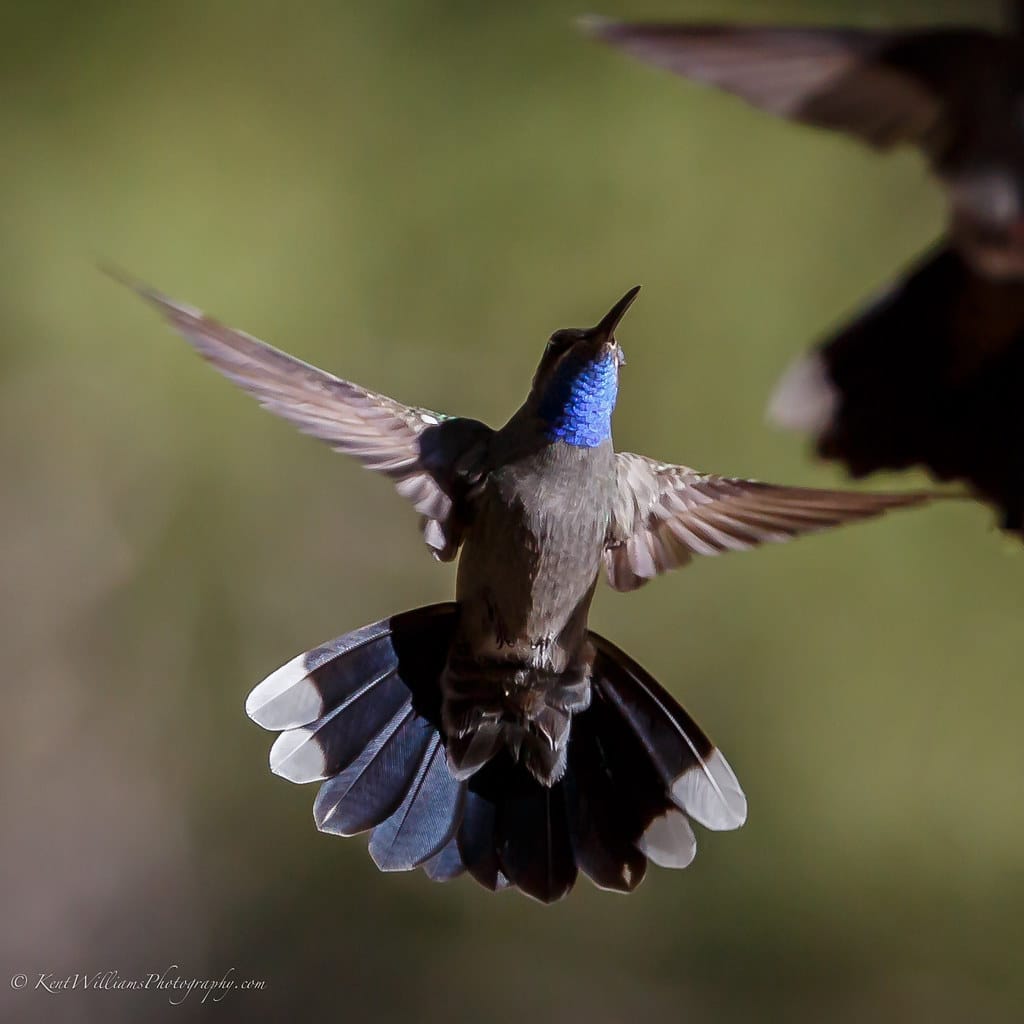
Blue-throated hummingbirds are the most commonly seen in the United States and Mexican regions. They are also known as mountain gems.
They have an assertive body posture, and their scientific name is Lampornis Clemenciae. They rarely visit North America. You can say that they are seasonal residents.
These birds’ size is slightly bigger than the five-inch length. Blue-throated birds are a bit larger as compared to other Hummingbirds.
Both Blue-Throated sexes have white tail tips; the male Hummingbirds have greyish underparts, white chests, and rich blue necks. On the other hand, the females don’t have blueish necks.
13. Plain-Capped Starthroat
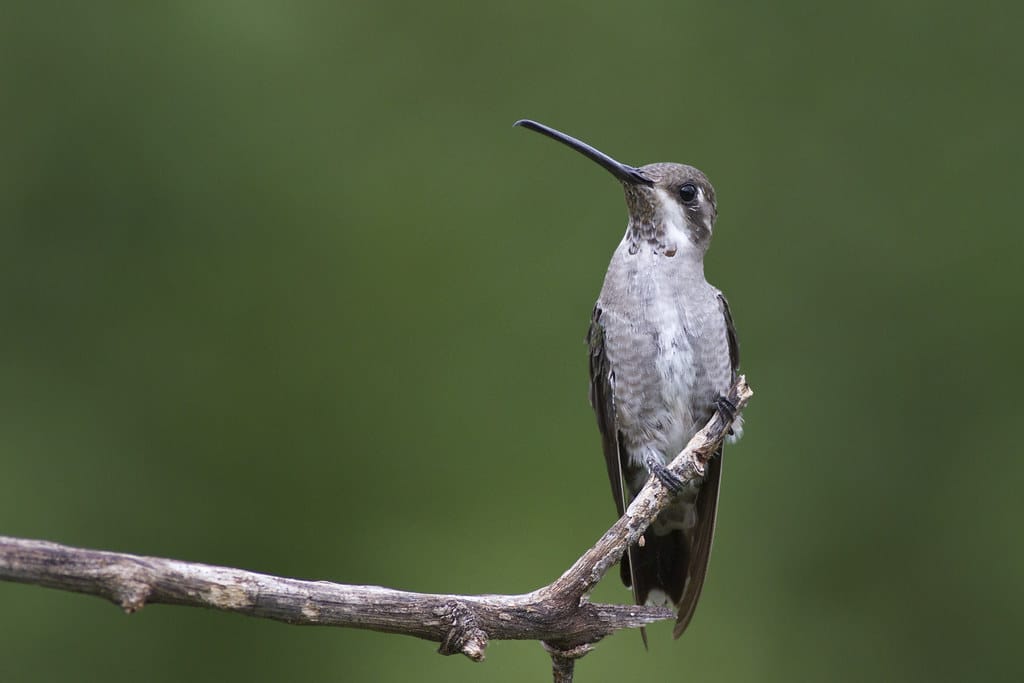
The Plain-Capped Starthroat does not breed on the North American side; they are frequent in the southern Arizona regions.
Plain-Capped Starthroat is the defensive kind of bird among different types of hummingbirds. They have gray underparts and brown-greenish shaded flaps; there is also a hint of the red color below their throats.
You can’t notice it immediately but may also see a white patch visible on the back side.
14. Broad-Billed Hummingbird
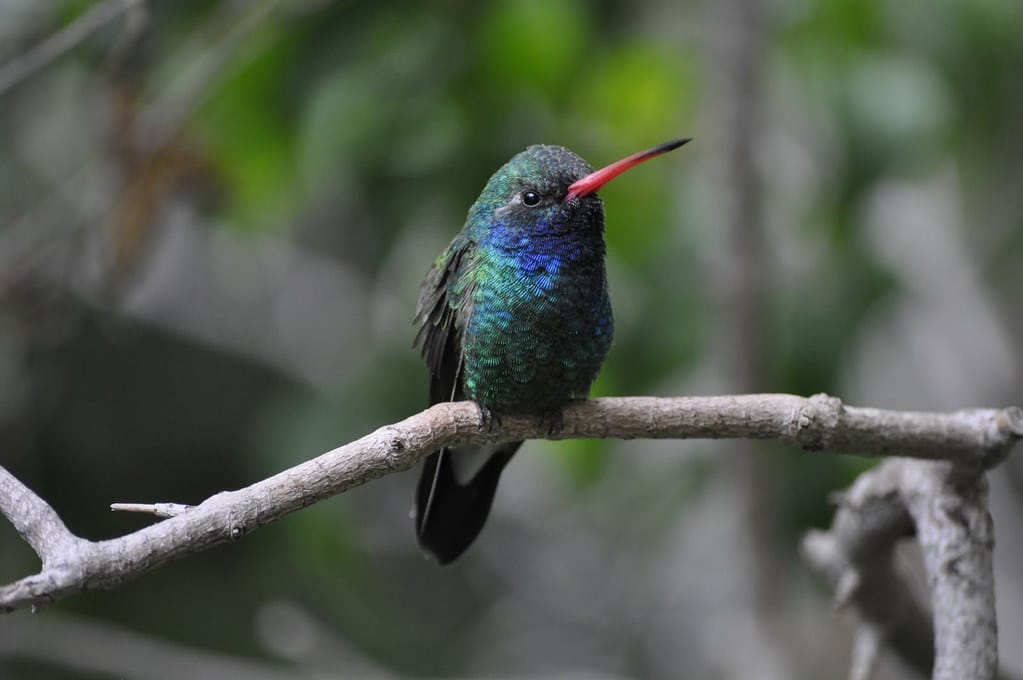
The Broad-Billed Hummingbirds have the most colorful body among the different types of hummingbirds, signifying beauty in Mexico and the southwestern United States.
The scientific name of these Broad-Billed birds is Cynanthus latirostris; the female Broad-billed Hummingbird has greenish underparts.
15. Berylline Hummingbird
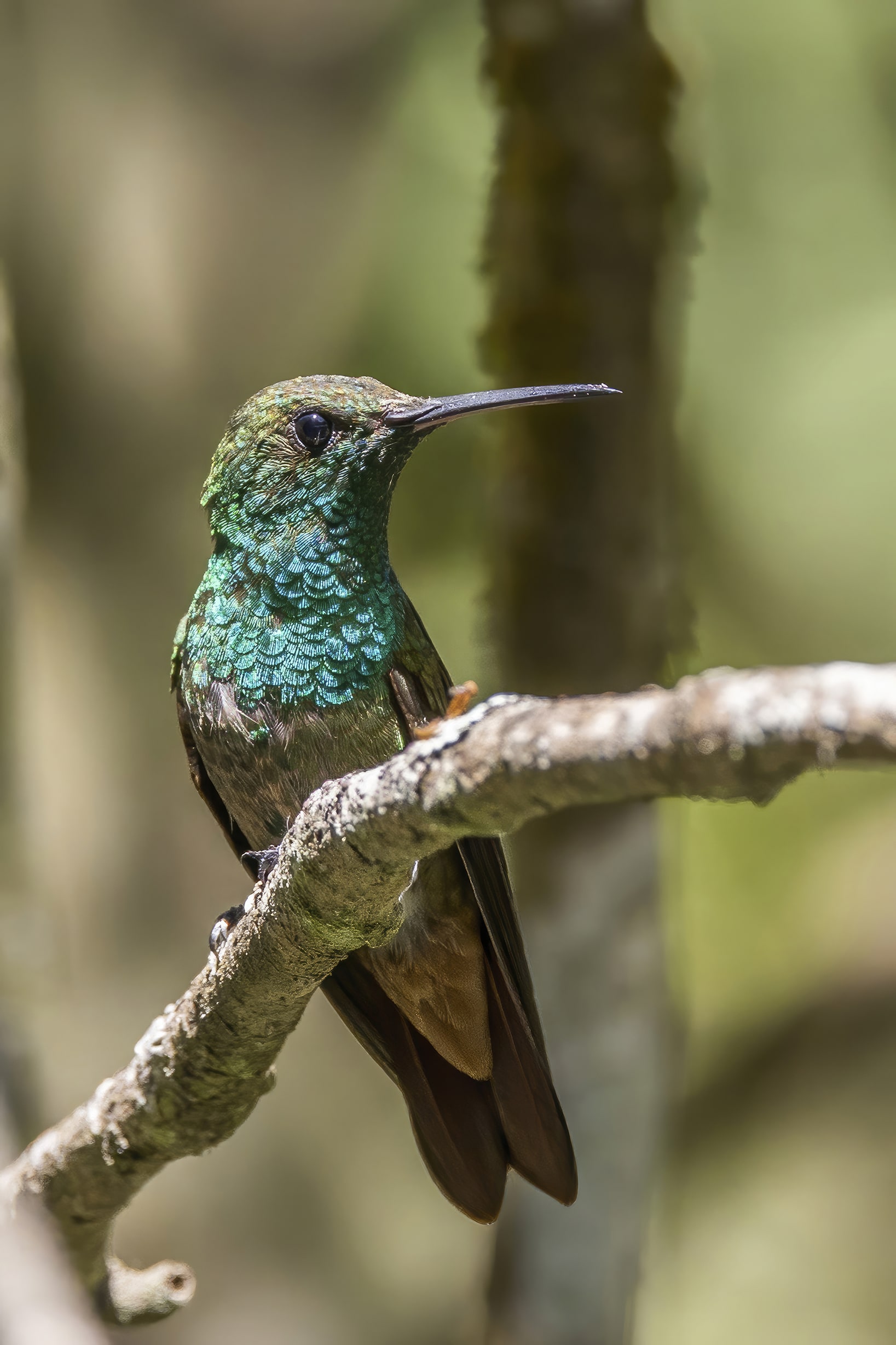
Berylline Hummingbirds showcase the greenish hues all over their bodies.
Beryllines’ nature is a bit rebellious; comprising a greenish head paired with darker rufous is enough to see them in the sky.
Their scientific name is Amazilia Beryllina. Also, they have whitish and greyish underparts and mainly reside near the streams; they have a bicolored bill (red & black).
Wrapping Up
You must have been curious all along; telling different types of hummingbirds apart can get tricky. We have saved you from research and hassle.
We have curated a list of the different types of hummingbirds to help you learn the differences.
Head to your backyard to identify which hummingbirds have been visiting you (from time to time).
Don’t forget to leave some snacks for these little birdies; welcome them as their season begins!








